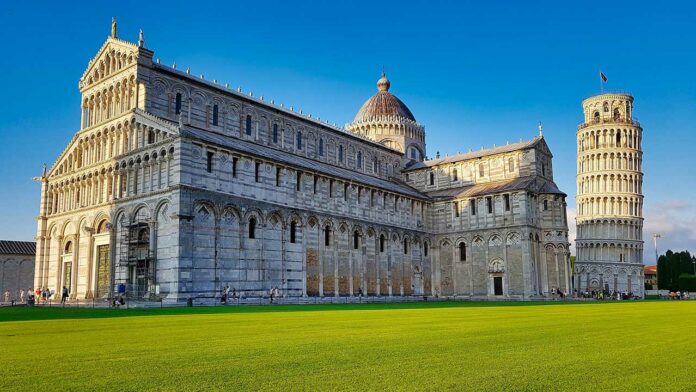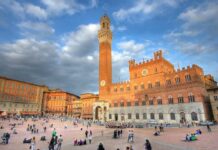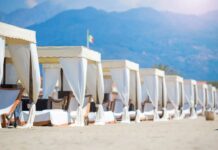Behind its medieval appearance, Pisa is a city with a young and dynamic soul in which the beauties to be discovered and the experiences to be had are not limited to taking a selfie with the iconic Torre di Pisa.
Located a short distance from Lucca and the Tuscan coast and just 90 minutes by car from Florence, Pisa is the perfect destination for a day trip. Its small size allows you to get around the city easily on foot, getting lost among its monumental buildings, the famous Tower and medieval alleys.
In the past it was a maritime power of great prestige and one of the four Maritime Republics along with Genoa, Venice and Amalfi, it is undeniable that today Pisa is known mainly for its particular tower. Loved and photographed by millions of tourists every year, contrary to what one might think, the Tower of Pisa was not intentionally designed askew, but its particular inclination is due to the subsidence of the ground at the time of its construction. This detail, however, certainly does not take away its charm! The Tower is also part of a much larger historical and architectural site, not surprisingly declared a UNESCO World Heritage Site: the Piazza dei Miracoli. In the heart of this verdant square are the Baptistery of San Giovanni (the largest in Italy), the Cathedral of Santa Maria Assunta – of which the tower was conceived as the bell tower – and the Camposanto di Pisa, designed by the architect known as Diotisalvi to represent the cycle of life.
If climbing the Tower (56 meters high) is a must, a visit to the Pisan Romanesque wonders of the Cathedral, the Baptistery, the Cemetery, the Opera House of the Cathedral and the nearby Museo delle Sinopie is recommended. Plan to book your ticket in advance, however, as the site can be quite crowded.
Like Florence, Pisa is also crossed by the Arno River, which divides the city. It is not surprising, therefore, that Pisa has its lungarni (Lungarno Mediceo and Lungarno Gambacorti), favorite places among young people for a walk or for a drink at sunset. But the lungarni also host ancient buildings of value, including the medieval Palazzo dei Medici, Palazzo Toscanelli, the Church of San Matteo in Soarta and the Church of Santa Maria della Spina, a local Gothic masterpiece. From the lungarni you can reach Palazzo Reale, an ancient medieval residence, then rebuilt by the Medici in the 16th century, for centuries the residence of the Grand Dukes of Tuscany and now the homonymous Museo Nazionale.
But Pisa is also the city where Galileo Galilei was born and carried out his studies. The city’s vocation for culture and wisdom is still reflected today in the presence of one of the most important Italian universities: the Scuola Normale Superiore di Pisa. The university is housed in the splendid Palazzo della Carovana, overlooking Piazza dei Cavalieri – the political fulcrum of medieval Pisa – and embellished with graffiti by Giorgio Vasari. Finally, every self-respecting visit passes through Borgo Stretto, one of the most picturesque neighborhoods of the city. Of medieval origin, it once housed the luxurious residences of merchants and nobles, while today it amazes for its perfectly preserved loggias and its characteristic craft stores.










